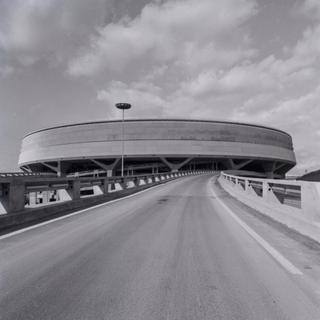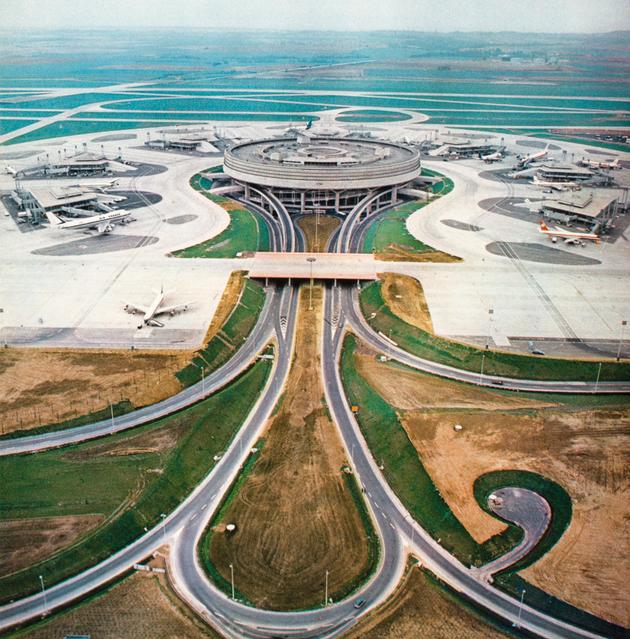


Paul Andreu's aerial metaphysics exhibited at Paris' Cité de l'Architecture
ReviewThe architect of Roissy airport and other major installations is the subject of a varied and splendid exhibition in Paris.
Terminal 1 at Paris-Charles-de-Gaulle airport in Roissy celebrated its 50th anniversary on March 8. Despite its age, it still looks quite impressive. This circular concrete structure supported by Y-shaped pillars perched like a flying saucer ready for take-off, exudes the reassuring charm of a project that has withstood the test of time while still working its magic on those who experience its interior. As soon as you set foot on the soft rubber of the conveyor belt, a sense of euphoria washes over you. As you climb between the glass and concrete tubes in the central cavity, a rising excitement takes hold, giving you the feeling of being propelled toward somewhere promising, freed from the cares and constraints of everyday life. No wonder films are still being made here.

Emblematic of the "30 glorious years" that saw its birth, and of the cult of speed and progress characteristic of that era, the building has undergone a recent series of transformations and will see the removal of five of the seven hubs that revolve around its periphery. These little octagons from where planes are boarded and disembarked will make way for a continuous ring, increasing the terminal's capacity. Two of them have already been demolished, and the first section of the new building now occupies the newfound space.
A thwarted trajectory
Terminal 1 is still in use thanks in part to its architect, Paul Andreu (1938-2018), who is the subject of a splendid exhibition at The City of Architecture and Heritage, in Paris. During his almost 40 years as chief architect and director of projects and cooperation at Aéroports de Paris (Paris Airports, ADP), he implemented a development strategy focused on consolidating buildings and modifying existing structures. This made Paris a relative anomaly in the airport sector. As the configuration of these huge facilities was designed to respond at a given moment to a complex situation − including factors like aircraft technology and size, safety requirements and increasing air traffic, which can all change with breathtaking speed − the decision has often been to tear down and rebuild.
A graduate of the prestigious Ecole Nationale des Ponts et Chaussées for engineering and the Beaux-Arts for architecture, Andreu built 225 projects in all, including some 20 airports from Dhaka to Jakarta, Abu Dhabi to Dar es Salaam (Tanzania) and Nice to Conakry. He also built major infrastructure projects such as the Cruas nuclear power plant in Ardèche in 1985, The Great Arch of the Defense in 1989 and the French terminal of the Channel Tunnel in Calais in 1995, as well as various cultural facilities including Japan's Osaka Maritime Museum in 2000 and China's National Grand Theater (also known as the Beijing Opera) in 2007.
You have 66.5% of this article left to read. The rest is for subscribers only.
